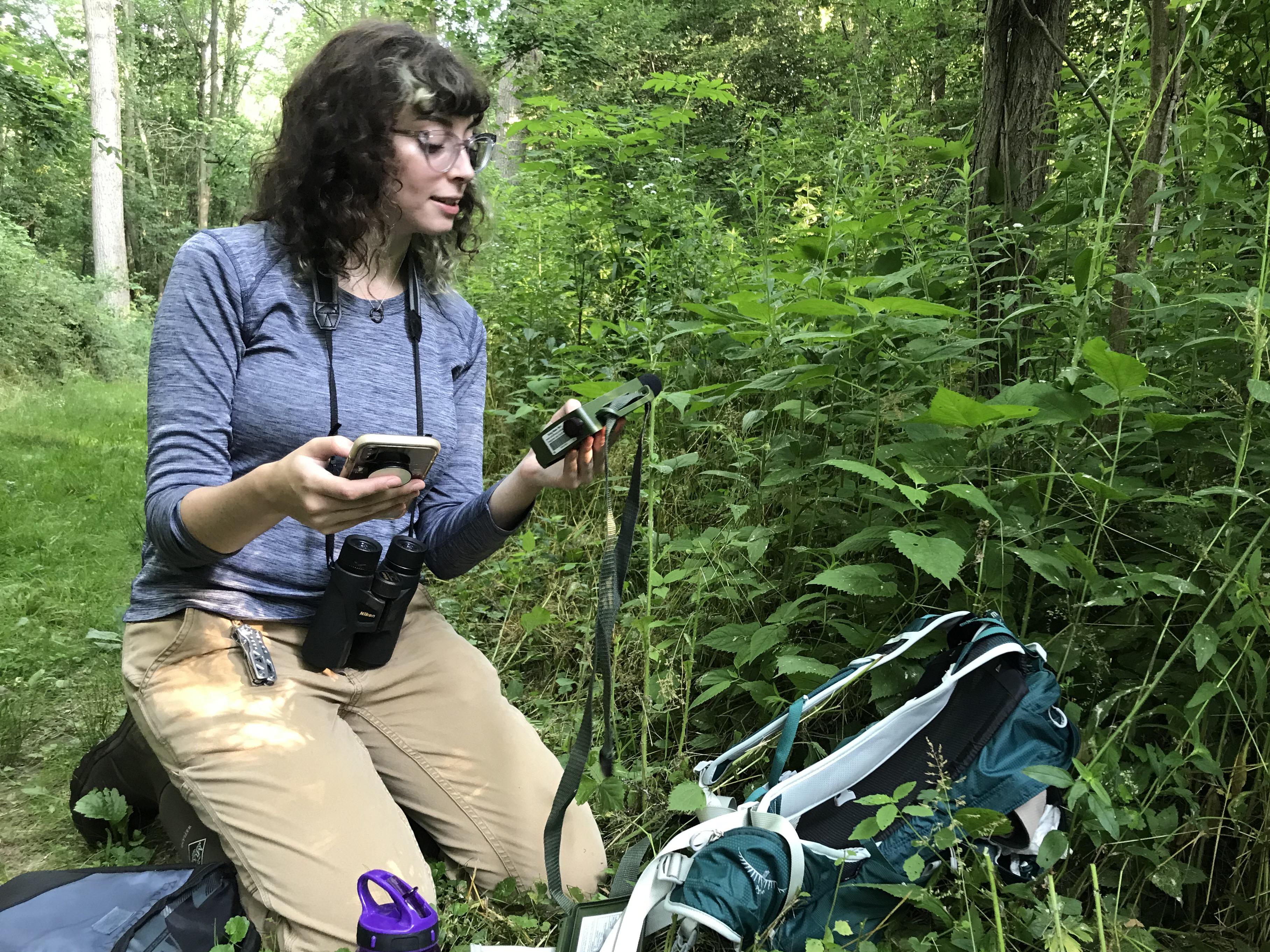Junior SUNY Oswego zoology major Brooke Goodman checks on some automatic recording units in Rice Creek Field Station in summer 2021, part of an ongoing study on how human noise pollution impacts birds' song repertoires. A fall 2021 Student Scholarly and Creative Activity Grant supports this ongoing research.
SUNY Oswego junior zoology major Brooke Goodman is analyzing how human noise pollution impacts the repertoire of Northern cardinals, with support from a campus grant.
A fall 2021 Student Scholarly and Creative Activity (SCA) Grant will help Goodman’s project, “Using Automated Recording Units to Study Northern Cardinal Vocal Behavior,” continue to track differences in songs between these birds’ singing in urban and rural environments in relation to anthropogenic noise, or human noise pollution.
Through “lots of long and intense summer days in Oswego and Syracuse” for the past two years, Goodman has deployed automatic recording units (ARUs) at Oswego’s Rice Creek Field Station and Barry Park in Syracuse.
These passive recording sessions “involved intensive field work and monitoring” for many hours, Goodman noted.
“I am now working to analyze differences in the urban and rural songs,” Goodman explained. “Factors like frequency, song duration and size of song repertoire may differ between the populations. The student SCA grant provided me with the funds for these ARUs, which has been critical for my research.”
Focus on noise pollution
In addition to studying bird behavior, the project emphasizes the impact of noise pollution, which “is an invisible form of pollution,” Goodman said.
“Most people don’t give it much thought as it isn’t as shocking as a river full of plastic or a huge landfill,” Goodman said. “Even though it is invisible, it is still impacting organisms. My research is another step in understanding how the noise we produce is altering the behavior of the wildlife around us. The more we know about the impacts of anthropogenic noise, the more we can do to mitigate those impacts.”
Goodman credits biological sciences faculty member and project advisor Daniel Baldassarre for providing “a valuable opportunity to begin my career in ornithology.”
“Through the summer research I have done with the Oswego Bird Behavior Lab, I have gained many skills that have made me marketable in the field of wildlife biology,” Goodman said. “I have also given multiple talks and presentations on my research, after encouragement from Dr. Baldassarre, which has helped me grow as a scientist and as a communicator.”
Other funded fall 2021 Student Scholarly and Creative Activity grants included:
- “Concurrent Symbolic Integration” by Dominic Altamura, with faculty mentor Ioana Coman, computer science;
- “The Costs and Benefits of the ‘Hyper Brain’: How Intelligence, Anxiety, Overthinking and Rumination Interact” by Quinn Ceilly, with faculty mentor Leigh Bacher, psychology;
- “Estimating the Detection Rate of Strix Varia Over the Course of a Spring Snowmelt Event” by Jamie Perrin, with faculty mentor Nicholas Sard, biological sciences;
- "Boys Can Wear Pink, Too!” by Justin Fischnich with faculty mentor Ritu Radhakrishnan, curriculum and instruction
Watch for future stories on the other funded projects.
For more information on these and other funding opportunities to support scholarly and creative activities, visit the Internal Grants website for Office of Research and Sponsored Program.




